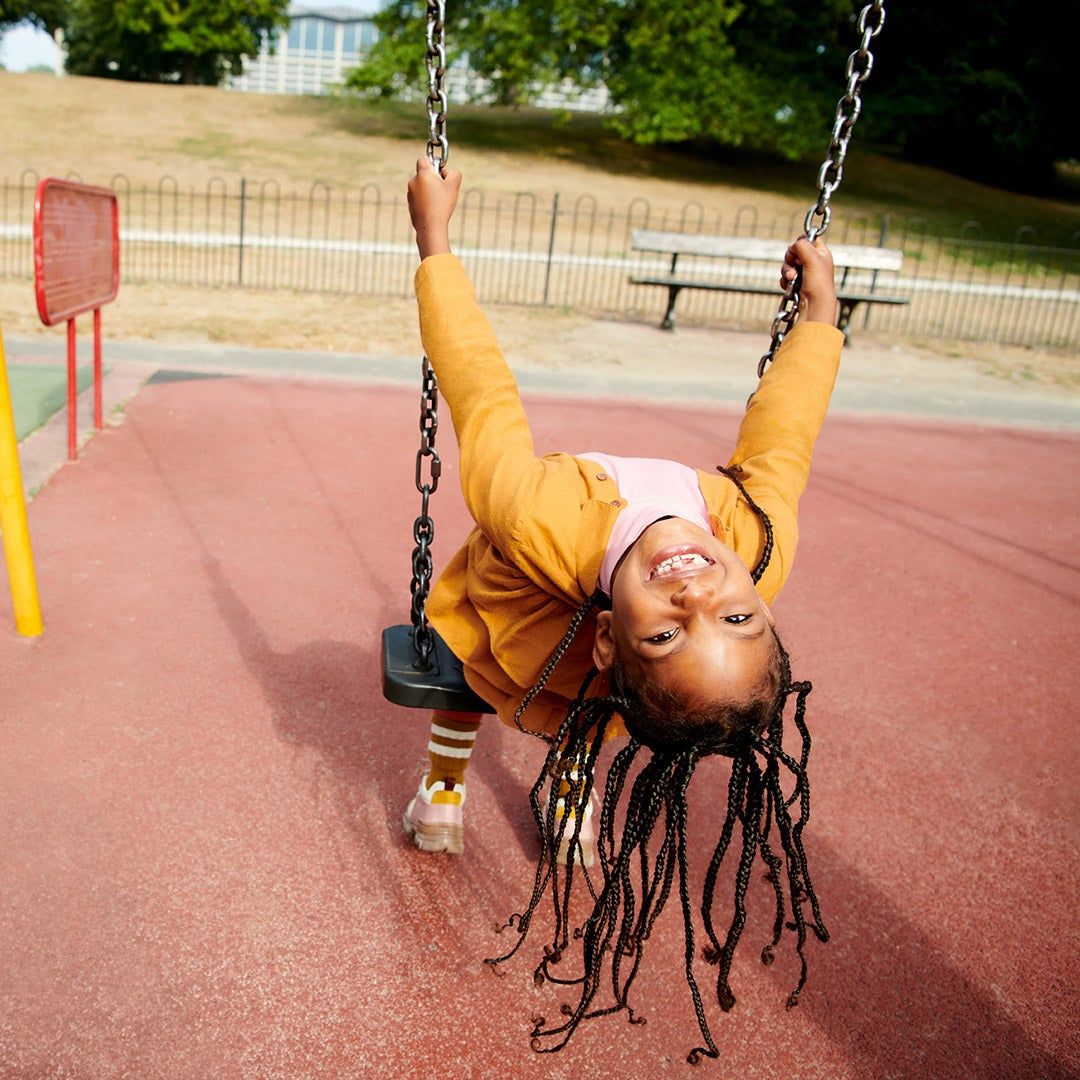
Back to School
Why It’s So Important to Keep Your Kids Active Right Now (and Always!)
With virtual learning, kids may be spending more time than ever being sedentary. Here’s how—and why— to get their bodies moving.
- Written By
- Marnie Schwartz
Since the pandemic hit, a lot of us are less active than we used to be. We’re no longer walking to (or around) our offices, going to the gym, or even doing much in-person shopping. And with school, sports, and even playdates on pause for many children, this is true for our littles, too.
Every parent whose toddler has started bouncing off the walls on a rainy day knows that kids need regular opportunities to run around outside and burn off energy. And that activity is actually really important for children’s health, says Dr. Kelly Fradin, author of Parenting in a Pandemic. “Of all the recommendations I have for parents, prioritizing your children’s physical activity may be the most important,” she says. Regular exercise helps kids sleep better and cope with pandemic stress, is associated with better test scores and academic success, is a part of maintaining a healthy weight, and even boosts your immune system, she says.
The official recommendation is that school-aged kids should be physically active for at least 60 minutes a day, most of which should be moderate or vigorous aerobic activity (i.e. it gets their hearts pumping). It doesn’t have to be all at once—short bursts can add up—and they should be fun and varied, including muscle-strengthening activities (like climbing the jungle gym) a few days a week, and bone-strengthening ones (like jumping) a few days a week. Younger kids should be active throughout the day. Here’s how to make it happen.
Start Early
You used to spend time each morning getting your kids to school and yourself to work. Repurpose that time now for some exercise. “I would encourage parents to get their children moving at least a bit before school starts, even if it’s just a walk around the block,” says Dr. Fradin. Early morning is also a good time to fit in a quick family bike ride or rollerblading session.
You used to spend time each morning getting your kids to school and yourself to work. Repurpose that time now for some exercise. “I would encourage parents to get their children moving at least a bit before school starts, even if it’s just a walk around the block,” says Dr. Fradin. Early morning is also a good time to fit in a quick family bike ride or rollerblading session.
Go Old-School
For preschoolers, Dr. Fradin also recommends games like tag and hide and seek. You can draw a hopscotch board on your driveway with chalk for an active lesson in numbers. Try hide and go seek or Simon Says. Or, just do running races in the backyard with school-aged children.
For preschoolers, Dr. Fradin also recommends games like tag and hide and seek. You can draw a hopscotch board on your driveway with chalk for an active lesson in numbers. Try hide and go seek or Simon Says. Or, just do running races in the backyard with school-aged children.
Play Socially-Distanced Sports
Running, biking, hiking, tennis, and golf are all safer than indoor, close-contact sports like basketball and gymnastics. That said, “following your children’s preferences is important,” says Dr. Fradin. “Activities they enjoy will be easier to do regularly.” So if golf isn’t their thing,
don’t force it.
Running, biking, hiking, tennis, and golf are all safer than indoor, close-contact sports like basketball and gymnastics. That said, “following your children’s preferences is important,” says Dr. Fradin. “Activities they enjoy will be easier to do regularly.” So if golf isn’t their thing,
don’t force it.
Schedule in Breaks
Make sure the list of activities for the day includes dedicated playtime (a “recess” if you will), but also short breaks between learning tasks. Even a couple of minutes of a dance party or freeze dance in between reading and math re-energizes kids, and takes no time to prep or equipment other than your phone for some tunes.
Make sure the list of activities for the day includes dedicated playtime (a “recess” if you will), but also short breaks between learning tasks. Even a couple of minutes of a dance party or freeze dance in between reading and math re-energizes kids, and takes no time to prep or equipment other than your phone for some tunes.
Ditch the Screens and Head Outdoors (When You Can)
If your kids are on laptops all day for school, they probably need a break. Plus, “it’s nice that online options like youtube videos and zoom karate classes exist, but in my experience, these don’t always get the heart rate up as much as outdoor exercise,” says Dr. Fradin That said, there are tons of virtual options available now for when the weather isn’t cooperating.
If your kids are on laptops all day for school, they probably need a break. Plus, “it’s nice that online options like youtube videos and zoom karate classes exist, but in my experience, these don’t always get the heart rate up as much as outdoor exercise,” says Dr. Fradin That said, there are tons of virtual options available now for when the weather isn’t cooperating.
Put Them to Work!
Outdoor chores like watering plants, raking leaves, or even washing the car can be fun for kids, and they’ll get some exercise in while they get the satisfaction of contributing to the family. Even little kids can “help” as you get these tasks done, and gain confidence and a sense of accomplishment from doing so.
Outdoor chores like watering plants, raking leaves, or even washing the car can be fun for kids, and they’ll get some exercise in while they get the satisfaction of contributing to the family. Even little kids can “help” as you get these tasks done, and gain confidence and a sense of accomplishment from doing so.